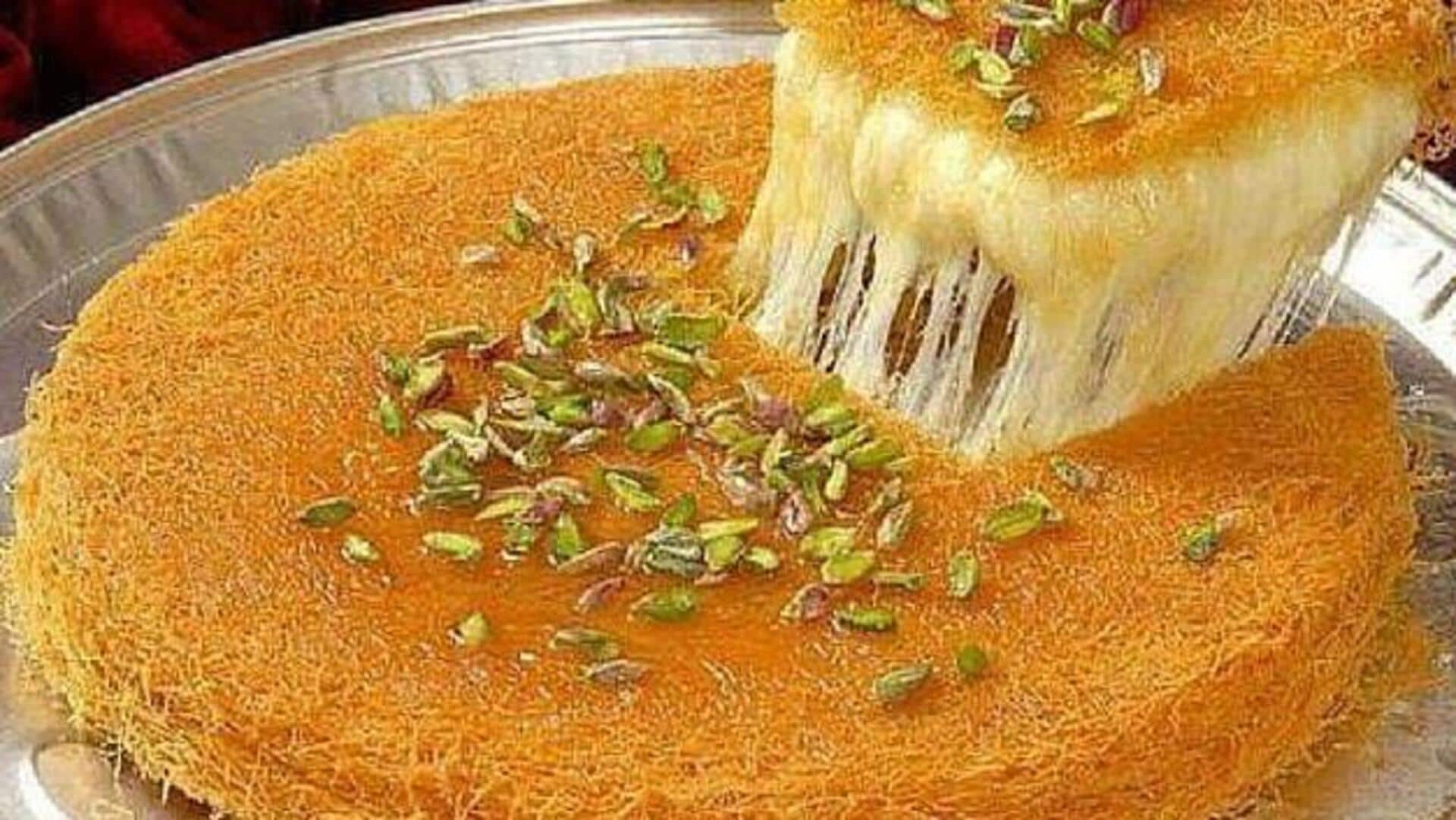
Knafeh: A cultural journey through its roots and flavors
What's the story
Knafeh, a beloved Palestinian dessert, has enchanted global taste buds with its unique symphony of textures and flavors. Hailing from the Middle East, this heavenly treat artfully layers crispy shredded dough, melt-in-your-mouth cheese, and a sweet syrup topping. This article explores knafeh's roots and guides you on how to savor it like a true local, paying homage to its vibrant cultural heritage.
History
The historical roots of Knafeh
The roots of knafeh extend deep into the Palestinian territories, where it was originally created in royal kitchens hundreds of years ago. This dessert rapidly ingrained itself in local customs and festivities, adored for its divine harmony of sweetness and texture. Today, it continues to hold a special place at weddings, festivals, and family gatherings, serving as a delicious symbol of happiness and community.
Varieties
Varieties across regions
Although the fundamental components are the same, recipes for knafeh can differ greatly among various regions of Palestine. Some regions favor a more delicate, melt-in-your-mouth cheese layer, while others prefer a heartier, crunchier dough base. Even the kind of cheese utilized can differ, with certain areas preferring unsalted cheese to counteract the sweetness of the syrup.
Locations
Where to find authentic Knafeh
If you want to try the real deal Palestinian knafeh, head to the bakeries in Palestinian neighborhoods. These places usually have secret family recipes that have been perfected over many generations. In any city with a big Palestinian community, you will find at least a few bakeries that are famous for this dessert.
DIY tips
Making knafeh at home
Making knafeh at home is a fun and rewarding process with the right ingredients and tools on hand. Key ingredients include kataifi dough (shredded phyllo), high-quality unsalted cheese like mozzarella or ricotta for the filling, and a sweet sugar syrup flavored with rose water or orange blossom water for drizzling on top. A quality non-stick pan is crucial for getting that perfect golden-brown crust.
Enjoyment tips
Enjoying knafeh like a local
To truly savor knafeh like a local, one must enjoy it warm. At this optimal warmth, the contrasting textures—crispy on the outside and delectably gooey on the inside—shine through. Pairing it with a cup of unsweetened Arabic coffee not only cuts through the sweetness but also profoundly enhances the overall experience, making each mouthful a symphony of flavors.